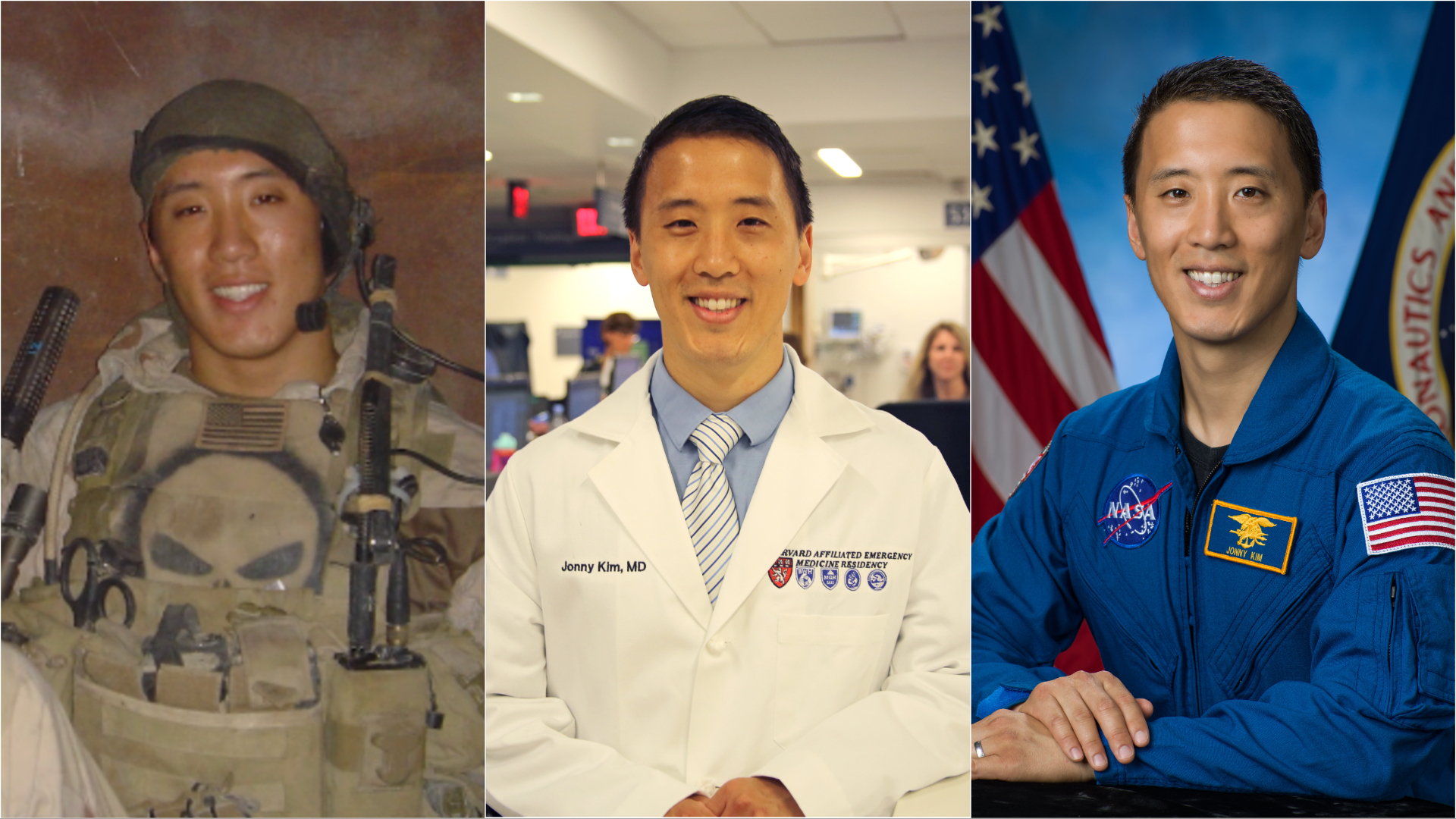

U.S. Navy SEAL. Harvard Medical School-trained physician. Astronaut. These are all things on Lt. Cmdr. Jonny Kim’s already extensive list of accomplishments. Now Kim can add naval aviator to that list.
Kim completed his advanced helicopter training on March 24, pinning on his wings at Naval Air Station Whiting Field in Milton, Florida, according to a Navy press release published this week
“NASA really values helicopter pilots for their perspectives and crew resource management mentality,” Kim said in the release, adding that astronauts in the Apollo space program also completed helicopter aviation training due to the similarities with lunar landing procedures.
“Space flight is closely related to aviation, and proper crew resource management allocates human resources to accomplish the mission safely and effectively. By virtue of the helicopter cockpit environment, helicopter pilots bring an abundance of CRM to the spaceflight table,” he said.
Subscribe to Task & Purpose Today. Get the latest military news, entertainment, and gear in your inbox daily.
To complete the aviation training, Kim completed both solo and night flights.
“The NVG [night vision goggle] training in the advanced syllabus for helicopters was amazing, especially because I have a lot of ground experience as a SEAL using night vision … but I didn’t have the experience of integrating a cockpit-NVG scan with degraded visual environments … That was really challenging and formative in my growth as an aviator,” said Kim.
Kim’s graduation from flight school – he was, naturally, on the so-called “Commodore’s List” of distinguished graduates – likely makes him one of few people in the ranks of the U.S. military who are both qualified naval flight surgeons and pilots as part of the Navy’s Aeromedical Dual Designator Program.

When it comes to achieving your childhood dreams, Kim has pretty much broken the mold. He enlisted in the Navy in 2002 at 18 years old, completing Basic Underwater Demolition/SEAL (BUD/S) training before he was assigned to SEAL Team 3, where he served as a combat medic, sniper, and navigator, and completed more than 100 combat operations spanning two deployments to the Middle East, including to Ramadi and Sadr City, Iraq. During that time, Kim earned a Silver Star and a Bronze Star with Combat “V,” along with completing the Military Freefall Parachutist, Combatant Diver (closed circuit rebreather), Naval Special Warfare Special Reconnaissance Scout and Sniper, and Advanced Special Operations Techniques qualification courses.
It was during those deployments, when Kim treated his SEAL teammates, civilians, and even enemy combatants, that he was inspired to further pursue medicine.
“I was the combat medic of my platoon and I had the fortunate opportunity to treat my fellow platoon mates, civilians and sometimes the enemy. But there was a limit to what I could do to help people,” Kim told Task & Purpose in 2020. “I made promises to a lot of the people that I lost, that I would spend the rest of my life doing something good, something positive for the world, because they left a void when they died, and I know that they would have been successful, making the world a better place had they lived.”
Kim was commissioned through the Seaman to Admiral-21 program, graduating from the University of San Diego in 2012 and then from Harvard Medical School, where he specialized in emergency medicine, according to the Navy. During his residency at Massachusetts General Hospital and Massachusetts Brigham and Women’s Hospital in Boston, Massachusetts, he spoke with astronaut and physician Scott Parazynski, who encouraged him to apply to NASA.
“I thought ‘this sounds like the special forces of science and exploration,’” Kim said in a Navy statement.
In 2017, Kim was one of just 11 people selected from a pool of more than 18,300 candidates for NASA’s astronaut program. He graduated with his class in December 2019, having completed instruction in spacewalking, robotics, International Space Station systems, T-38 jet proficiency and Russian language.
All astronauts are required to complete introductory flight training. The candidates complete 12 hours of training as the front-seat pilot in a T-6A Texan II propeller-driven aircraft, and Kim became rear-cockpit qualified in a T-38 Talon jet. But why settle for that when you can just become a genuine Navy pilot yourself?
“Pretty early on I realized the closest analog to space flight was aviation training,” said Kim. “I wanted to be able to extend and apply as much of the operational experience I had as a combat-experienced SEAL into space flight. A lot of my operational experience does apply to space flight but there are some aspects that I didn’t have the right perspective on because I didn’t have pilot in command experience.”
Kim entered flight school last year. Before him, the last person to achieve the astronaut-doctor-pilot trifecta was Navy Capt. David Brown, who completed training as a flight surgeon in 1984, went on to become a pilot in 1990 and then was accepted into the astronaut program in 1996.
Kim is currently awaiting assignment to a future spaceflight. Until then, the sky is quite literally the limit — for now.
Correction: 4/24/2023; a previous version of this article incorrectly stated that Naval Air Station Whiting Field was located in Corpus Christi, Texas. It is located in Milton, Florida. A previous version of this article also omitted that Lt. Cmdr. Jonny Kim is part of the Navy’s Aeromedical Dual Designator Program.
The latest on Task & Purpose
- How much of a threat does Russia’s Pacific fleet pose to the US?
- 5th Security Force Assistance Brigade commander suspended
- Former Afghan interpreter graduates from boot camp to become a Marine
- Russia jams US GPS-guided weapons given to Ukraine, leaked info shows
- Taiwanese Air Force pilot’s ‘Winnie the Pooh patch’ causes international controversy
